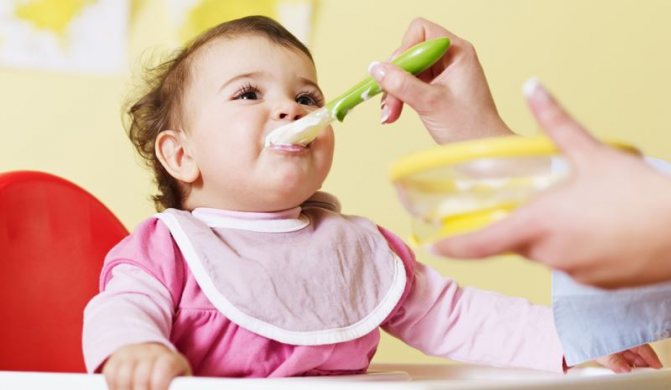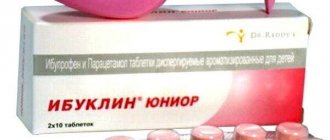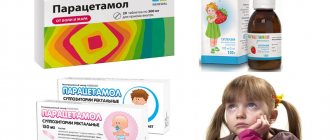Absolutely not
Ready semi-finished products. Fast, convenient, but not useful for children whose gastrointestinal tract is imperfect - the processes of digestion, the production of enzymes and bile in preschool children are still immature. The nutritional value of semi-finished products is questionable, and one can only guess about the qualitative composition of their components. For the production of semi-finished products, proteins of plant origin are often used, which are inferior to meat and fish in amino acid composition. Excess salt in ready-made semi-finished products creates an unnecessary burden on the child’s kidneys, food additives provoke allergies, spices irritate the gastrointestinal mucosa, starch and soy are poorly digested and cause functional disorders of the digestive system.
It is better to prepare minced meat for baby food yourself, since store-bought meat often contains a lot of fat, connective tissue, and poultry skin. The same applies to minced fish - it is prepared from low-value varieties of fish, and only a production specialist can control the quality of the product.
Sausages, smoked meats. Some parents sometimes replace a full-fledged meat or fish dish on the children's table with sausages - for the same reasons of saving time. The cost of a kilogram of the most optimal quality sausages is almost equal to the price of meat (veal, beef, pork), and sometimes even higher. But this does not mean at all that meat of a certain category is present in the product in the amount required by the standards.
According to GOST, premium sausages consist of beef, pork, milk powder or cream and eggs. If the product is of a lower grade, it contains up to 10% trimmed meat, starch and a protein stabilizer. However, on store shelves you mainly find sausages manufactured according to specifications - according to standards created by the manufacturing company itself. That is why the composition of the product changes and becomes “richer” - various fillers (cheese, paprika), soy, sodium nitrite (color stabilizer) and monosodium glutamate (flavor enhancer), ascorbic and citric acid, as well as salt and spices are added to it. All these components, depending on the concentration in the product, negatively affect the health of the child.
Smoked meat and fish products today are often produced not by the traditional smoking method, which is also not very healthy, but with the use of a special (and very harmful to the human body) substance that gives the product the necessary taste, smell and color.
Sweet carbonated drinks. This is a completely synthetic product, if you do not take into account the water itself. And even a certain percentage of natural juice in some “sodas” is not able to compensate for the harm that artificial colors, preservatives, flavors, sweeteners and carbon dioxide cause to a fragile body. They not only affect the child’s gastrointestinal tract, spoil tooth enamel, but can also provoke a lot of serious diseases. The best drink for a child is water (pure drinking water, from the age of two - still table water, but not medicinal), freshly squeezed juice (diluted with water), fruit or dried fruit compote, berry juice.
Chips, crackers, salted nuts. These snacks are also on the list of prohibited foods, as they contain food additives, flavor enhancers and flavors, hydrogenated fats and a lot of salt.
Fast food. The best way to avoid your child's love for such food is to avoid visiting places where it is sold. Confidently walk past the bright signs of fast food restaurants, ignore the aroma of pies in a kiosk near the metro, forget about instant noodles and soups. After all, this food is a direct path to obesity, diabetes, and malfunctions of the immune and cardiovascular systems.
Canned foods. Industrially produced canned meat and fish cannot be included in children's menus - they contain a fair amount of preservatives, dyes, flavor enhancers and salt.
Vegetables and fruits “from a can” (products of enhanced heat treatment and a long shelf life) contain very few vitamins. Canned vegetables contain a lot of salt and vinegar, fruits contain a lot of sugar. And if this is not home preservation, then there are also synthetic preservatives. Children should be introduced to such products no earlier than seven years of age. It is better to freeze vegetables, fruits and berries in the summer and autumn in order to prepare delicious vegetable stews, casseroles, berry fruit drinks and fruit desserts in the winter. Or buy ready-made frozen products, remembering that the blast freezing method is the most gentle.
Mushrooms. There is no need to introduce your child to this product until they are at least six years old. Marinated, fried, boiled - in any form they are difficult for children's gastrointestinal tract. The same applies to mushroom broth.
Mayonnaise and ketchup. Homemade mayonnaise, a product with a high fat content, can be given to a child only after three years, in small quantities and not systematically. It is better to completely avoid ready-made mayonnaise, which contains flavoring agents, dyes, thickeners, stabilizers, emulsifiers and preservatives.
Ketchup is also not a baby food product. It contains a minimum of vitamins and nutrients, hot spices will harm the child’s body, and it is produced using the same preservatives and synthetic additives (to improve color, taste, aroma).
It's possible, but be careful
This group includes products that are not recommended for children to consume, but can be consumed under certain conditions. And also those that should not be on the children's menu until a certain age of the child.
Sweets. The later the child gets acquainted with sweets, the better. But since everything sweet is a source of easily digestible carbohydrates that the body needs, you can occasionally offer your child a little marshmallow, marshmallow, marmalade, jam as a dessert (while remembering the dangers of synthetic dyes and flavors). It’s even better to replace store-bought sweets with berries and fruits, honey (if there are no allergies), dried fruits, sweets and homemade jam.
Experts believe that chocolate is contraindicated for children under three years of age. It creates an extra load on the pancreas, causes allergies, excites the baby’s nervous system, and can provoke caries. An alternative to chocolate are sweets made from carob, a sweet powder made from the pulp of the carob tree. It tastes like cocoa, is very healthy and, unlike chocolate, has no “side effects”.
Flour products. Their regular use in uncontrolled quantities provokes excess weight. You can sometimes allow your child to eat a bun or pie (for an afternoon snack), but it is better to limit himself to biscuits or dry bread. Products made from puff pastry, shortbread, and butter dough that contain margarine should be abandoned altogether - its components increase the level of cholesterol in the blood and provoke the development of vascular diseases.
Seafood. Champions in protein, vitamins and minerals, they are also strong allergens. Therefore, it is not advisable to introduce a child to seafood before the age of three. The salt content in red fish and caviar is increased, which negatively affects water-salt metabolism. Sushi, if it is made from raw fish, should not be given to a child at all.
Seasonings and spices. They make the taste and aroma of food more intense, but for children's food, seasonings must be selected very carefully. After a year, you can add greens (dill, parsley, cilantro) to your child’s food; from 1.5-2 years old - onions, garlic (in hot dishes); from 3 years old - bay leaf. Spices used in dishes for adults can irritate the mucous membrane of a child's esophagus or provoke allergies. Ready-made spice mixtures and various flavoring seasonings cannot be added to food for a child - in addition to the main components, they contain a lot of salt and various preservatives.
Instant porridge. They are very convenient to use - you don’t have to wash the cereal or wait for it to cook. You just need to pour boiling water into a portioned packet that already has “everything included” - sugar, fruit or chocolate, cream or milk. And also - flavorings, taste enhancers and other synthetic additives. The nutrients and vitamins that whole grains contain are lost during numerous processing steps. Therefore, the use of such porridge in baby food is justified only in emergency cases.
What foods can be given to a child under one year old?
The age at which new foods are introduced into a child’s diet depends on whether he or she eats breast milk or not. A “natural baby” can eat unfamiliar food from six months, but an artificial baby has the right to count on additional complementary feeding from four months.
Moreover, experts have strict requirements for the products from which first courses for children will be prepared. They must be:
- low-allergenic;
- containing a complex of essential vitamins and minerals;
- cooked in clean water or steam;
- without any seasonings or flavor enhancers (even salt is not allowed);
- free from preservatives and artificial colors.

Agree, the requirements are quite serious and quite reasonable. To protect babies from allergic reactions and tummy problems, domestic doctors and experts from the World Health Organization recommend giving children under one year of age the following products:
- Porridge made from buckwheat and oatmeal. Moreover, these products are the first on the list of complementary foods if the child is underweight. After the baby gets used to these cereals, corn and millet porridge are added, to which a teaspoon of oil is added.
- Vegetable purees. Finely chopped vegetables (zucchini, cauliflower, broccoli) are also considered one of the first complementary feeding options if the child is gaining weight in accordance with standard indicators. Then carrots, beets and potatoes are included in the diet.
- Kefir, milk and cottage cheese. It is recommended to give fermented milk products to a child from 7 months, and their content constitutes approximately a third of the entire daily baby diet. About 50% of this volume should be kefir, which contains easily digestible proteins and various useful components.
- Chicken egg A child under one year old can only be given hard-boiled yolks due to the risk of an allergy to the protein. The approximate daily value is about a quarter of the yolk.
- Meat puree. Such products are allowed to be given at seven months, but not every day. It is better to give preference to industrially produced veal puree, turkey, rabbit or beef.
- Fruits. Scientists recommend giving your baby fruits that grow in your region at seven months. Firstly, the likelihood of buying fresh food increases, and secondly, the risk of allergies decreases. It is best to start with pears, green or yellow apples, and only then move on to orange fruits.
- Oils. Such products contain the essential vitamin E, so a little vegetable or butter added to the porridge will not harm a child under one year old.
- Fish. Closer to 10 months, it is allowed to give the baby fish, but it is necessary to carefully monitor the child's reaction, because this product is a pronounced allergen. It is best to start with pollock, hake or pike perch.
Only clean drinking water is suitable for the baby to drink. Other drinks, for example, fruit juice, fruit juice, are considered food products, so they cannot replace standard water.
In addition, WHO does not recommend excessive consumption of juices, since they contain a large amount of sugars.
Myths and reality
Myth 1. “We ourselves were fed everything that our parents ate - and grew up.” Do not forget that food products then and now are noticeably different. After all, before they did not have such a list of synthetic additives.
Myth 2. “A child should be accustomed to different foods and allowed to try everything.” However, it should be remembered that some additives in products are dangerous for the child - they accumulate in the body, provoking the development of chronic diseases.
Myth 3. “Everything is allowed - and I will.” Do not forget that the task of parents is to help the child form the right attitude towards healthy food, teach him to distinguish good from bad, healthy foods from harmful ones.
Myth 4. “One time won’t do anything.” Even by simply trying a prohibited product, a child can develop an allergy or malfunction of the digestive system. In addition, next time mom will have to explain why it was possible to eat it before, but now it’s no longer possible.
Instead of conclusions
When choosing foods for children, you must definitely read their composition - the less sugar, salt and various additives they contain, the better. It must also be remembered that sometimes manufacturers are silent about some components of the product or even replace them with others. Shelf life is of great importance - the shorter this period of time, the fewer preservatives were used to make the product.
If there is a ban on your child eating certain foods, it is important that they do not appear in the house. We must also instruct our loved ones in this regard and try to “raise” like-minded people in them. As practice shows, a child gets used to the list of prohibitions faster than adult relatives.
Product selection criteria
Mother's milk is the best food for a newborn baby, this is a scientifically proven fact! It contains so many useful elements that all questions about what foods can be given to the baby are removed for up to five months.
However, in some situations, breast milk is excluded from the list of permitted or “available” products, and then mothers are forced to resort to special formulas. That is why you need to understand how to choose the right formula - artificial milk for a child under one year old. The selection criteria are as follows:
Maximum similarity of products - formula and mother's milk - in composition. According to this criterion, all infant formulas are usually divided into 3 main groups:
- highly adapted (repeate mother’s milk as much as possible);
- less adapted (partly reminiscent of human milk);
- unadapted (due to their composition they are poorly absorbed by the child’s body, so it is better to give them to the child after 6 months);
It is better to feed newborn babies with adapted substitutes, since they contain all the necessary elements for the formation of natural microflora in the gastrointestinal tract.
In addition, they do not contain food additives that can lead to constipation.
Age indicators. Why is the age principle so important? The child is growing, which means his body “presents” new requirements for food.
This is absolutely natural, since mother’s milk also changes composition as children grow older. You can determine the age characteristics of the mixture on the packaging:
- number “0” – the substitute is suitable for a newborn or prematurely born child;
- “1” – substitute up to six months of age;
- “2” – substitute from six months to a year;
- “3” is a substitute suitable for babies over one year old.
Individual characteristics of the child. Mom today can buy products for every taste and need of the baby.
For example, manufacturers offer children with allergic reactions to casein and whey proteins contained in cow's milk with goat's milk substitutes.











